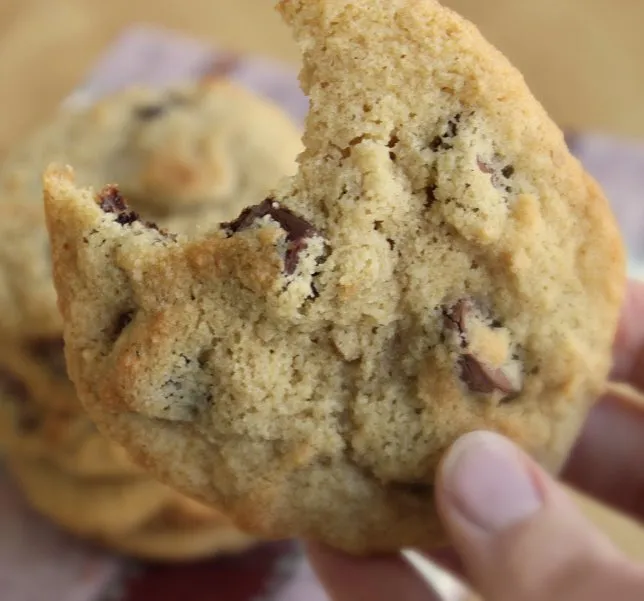Breaking a Fast: Post Fast Eating Strategies
As you all know, I’m a huge fan of fasting, and all the amazing health benefits. Fasting is one of the best ways to heal the body from the inside out, and part of my Multi-Therapeutic Approach (MTA) to good health. I intermittent fast daily, but I also believe block fasting is something most of us should do at least once per year. However, how does one go about safely breaking a fast?
The majority of healthy people reading this are able to fast. However, I don’t recommend fasting for pregnant women or women that are nursing because there needs to be a certain caloric intake during this critical time in their lives.
We were designed to fast!
From a historical perspective, both intermittent and block fasting were a way of life for our ancestors.
I believe ancient cultures were forced into times of famine because they literally had to hunt for their food. During these fasts, their bodies went through many positive changes:
- They reset their DNA and microbiome
- Developed new stem cells, immune cells, and muscle cells
- The body rid itself of damaged cells via cellular autophagy
The problem for us today is we’re not being forced to fast, like our ancestors were. As a result, we don’t get that precious time to reset our bodies. Breaking a fast has not been a concern, because we just don't typically fast.
During a fast, our cells down-regulate inflammation, and the receptors on the cells become very sensitive to hormones. That’s a really good thing, because it helps to treat conditions like thyroid activity, diabetes, and others naturally. Fasting helps every hormone in the body function better and more efficiently, which I call hormone optimization.
As a person gets deeper into the block fast, that’s when the magic happens. For example, on day five, you get the highest rise in growth hormone, which is used to protect muscle and good tissue in the body. The only protein or muscle that you would lose during this time is the bad stuff, which enables you to build a better, stronger foundation on a cellular level.
That’s how intelligent the body is.
How long do I fast before breaking a fast?
Five days is a perfect amount of time for people to fast. Some people arguably would do better with longer fasts, but five days should suffice for most people. I always found that clinically, on day four, you make the transition and become an incredibly efficient fat burner. Your brain’s using ketones and you feel better.
It takes three days of fasting to reach this point, so I’d say if you can ride it out one more day to five days, that’s the perfect amount of time. You get the most dramatic rise the fifth day into a fast, and by eating healthy foods on day six, it feeds these stem cells, and you get the most out of them.
These are just a few benefits of fasting. They say knowing is half the battle, so I like to explain why a person should fast, especially block fast. I believe when a person understands the benefits, they will be more inclined to give it a try and stick with it. Now let’s get to the “meat and potatoes” of how to break a fast, what foods to eat, and when!
One of the most common questions we receive is “how do we break the block fast?”
Best Foods to Eat When Breaking a Fast
When breaking a fast, go slowly by eating very soft, easily digestible foods such as berries, soft avocados, and veggies that are steamed or blended. A little coconut oil or olive oil can be good as well, but consume just a little bit at a time.
Remember: it will take the body time to adjust to eating again. Patience is key.
Ease back into eating by consuming very basic foods instead of big, heavy meals. Your digestive enzymes will be sluggish after the fast. It’s also beneficial to wait a few days before adding meat back into your diet. Your digestive system has just rested for a very long time and needs time to adapt back into processing food again.
Here are a few of the top foods to eat when breaking a fast:

How many calories do I consume when breaking a fast?
This is one of the few times you want to pay attention to calories, as you don’t want to consume too much too fast. (Intermittent fasting is a great way to break the fast as well.)
Bonus post-fast eating strategy: Intermittent Fasting
One of the best times to intermittent fast is when you are breaking a fast. With intermittent fasting, you still get some autophagy, which is critical to good health. You don’t get as much as you do with longer fasts, but you still reap many of the benefits.
Contrary to popular belief, fasting does not lower your metabolism. This is due to the growth hormone rise that you get, which in actuality protects your metabolism. On the other hand, cutting calories can cause your body to go into starvation mode, which makes the metabolism slow down and force your body to hang on to every calorie consumed.
In ancient cultures, they ate less by eating less often. Intermittent fasting lengthens the telomeres (remember, telomeres wrap the ends of our chromosomes and protect our DNA making us live longer). Through intermittent fasting, we can really see a dramatic difference in these telomeres.
Intermittent Fasting Tips:
- Eat within a specific window of time
- Skip all the snacks. Remember, the more meals you eat, the more you are stressing your mitochondria and cells. This is what ages us, and could cause an earlier death.
- Advance to skipping breakfast
- Advance to eating (2) meals in an 8 hour window (AKA 16 hour fast)
- Advance to eating (2) meals in a 6 hour window (AKA 18 hour fast)
- Advance to eating (1-2) meals in a 4 hour window (AKA 20 hour fast)
Key Takeaways of Breaking a Fast/Intermittent Fasting:
- Go low and slow when reintroducing foods
- Do not limit calories, but rather restrict eating to a certain window of time
- Don’t eat less, eat less often (INTERMITTENT FASTING)
- Each subsequent fast will get easier as the body becomes more efficient
How do you know which eating window to choose?
A person may be confused as to which method of intermittent fasting is best for them (16, 18, or 20 hour fast). Here is one way to make that decision:
In the morning, measure your glucose and ketones. Before you consume your first meal, measure them again. You should see a slight drop in glucose and rise in ketones. This indicates that you are using fat in that specific window of time.
If that doesn’t happen, push your eating window back. Most autophagy starts in 16 hours, so as you decrease your eating window and do more block fasts, your efficiency will begin to improve. Doing this while following a ketogenic diet is key.
In addition to ketosis, these post fast strategies help to optimize our hormones, and allow the cells to become more hormone sensitive. Fasting gives ketosis the extra leverage it needs, driving up ketones and utilizing autophagy. When breaking a fast, remaining in ketosis will help extend these amazing benefits.
Both intermittent and block fasting are the premier ways to harness our bodies’ innate ability to heal itself naturally. However, breaking a fast and refueling your body is just as important, if not more so. You don’t want to throw all the hard work you’ve done out the window. Remember to go low and slow when breaking a fast, and your body will thank you. Want to learn more about fasting and join an amazing community of people who are on a similar journey? Join my Fasting for a Purpose facebook page!














